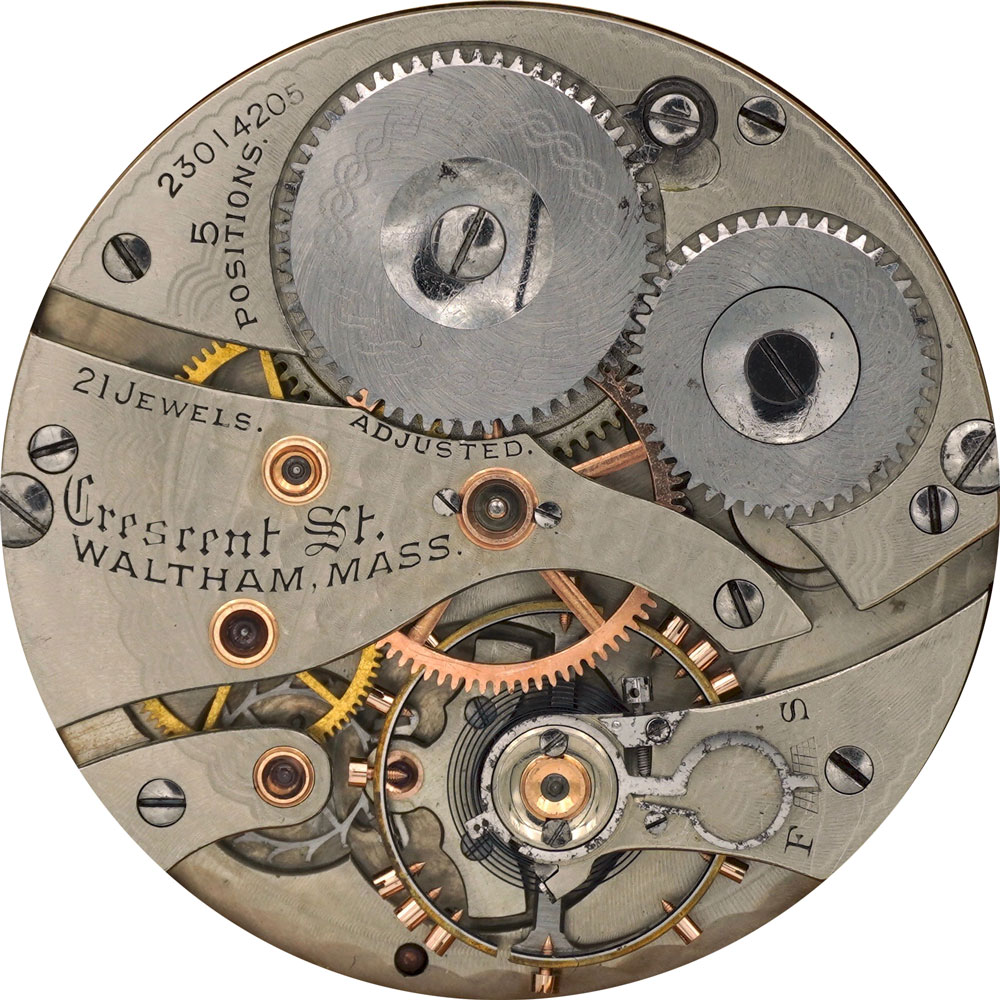Reference Library
Pocket Watch Movement Plate Types
Movement plates provide the housing structure for the inner parts of the watch. The top plate, which is usually signed by the manufacturer marking and serial number, can be easily viewed by removing the back of the watch. The pillar plate can be seen by removing the dial of the watch.

Pictured: Full Plate Pocket Watch Movement
Full Plate
The gear train within full plate pocket watch movements is sandwiched between two metal plates while the balance cock is fitted above the top plate. Early American 18-Size pocket watches are almost exclusively full plate designs.
Identification: The balance cock is attached to the top plate and the gear train is not easily visible.

Pictured: 3/4 Plate Pocket Watch Movement
3/4 Plate
3/4 Plates were commonly used when manufacturing movement sizes 16s and smaller, offering the ability to produce a watch much thinner when compared to a full plate watch. Typically, the balance cock and the top plate are adjacent and flush, requiring a cutout in the top plate of the movement. Many times, the 3/4 plate is split into two parts.
Identification: The top plate has about 1/4 cut around the balance, which is flush with the top plate. The balance wheel is genreally positioned below the center wheel.

Pictured: Bridge Plate Pocket Watch Movement
Bridge Plate
Bridge plates are separate peices that secure the gear train and were commonly utilized in higher-quality watch movements after 1900. The use of bridge plates allowed more of the gear train to be visible. Some manufacturers created models with "false bridges" to give the appearance of a more expensive and elegant watch. A false bridge has the appearance of being a separate plate but is actually part of the top plate structure. In contrast, a true bridge is a separate plate, usually having the appearance of an "arm."
Identification: The wheels of the gear train, including the center wheel, are secured by separate pieces attached to the pillar plate. False bridges have the appearance of being separate bridge plates, and true bridges are actually separate pieces.

Pictured: 3/4 Bridge Plate Pocket Watch Movement
3/4 Bridge Plate
3/4 Bridge plates are similar to the standard bridge movements. However, the train bridge does not extend over the center wheel. Rather, the 3rd, 4th, and/or escape wheels are retained by separate "finger" bridge pieces. While having the appearance of separate pieces, the 3/4 bridge is generally manufactured as a singular piece.
Identification: The 3rd, 4th, and/or escape wheels of the gear train are secured by "finger" pieces attached to the pillar plate, while the center wheel is retained by the main plate.